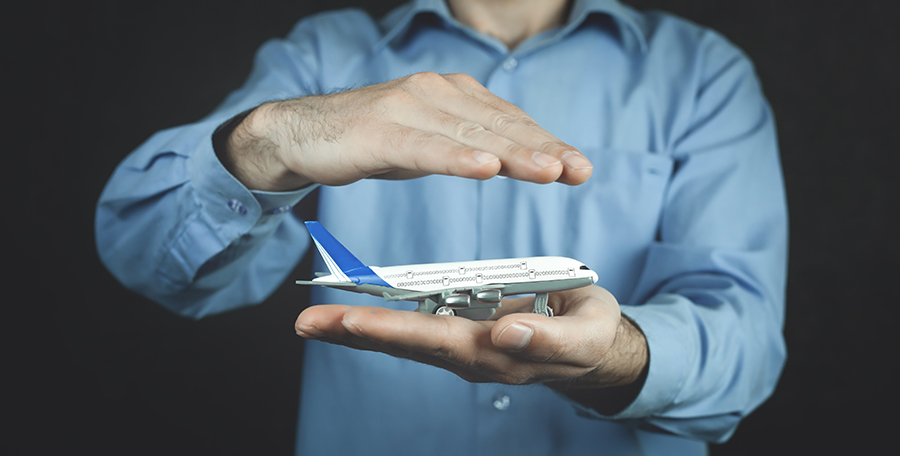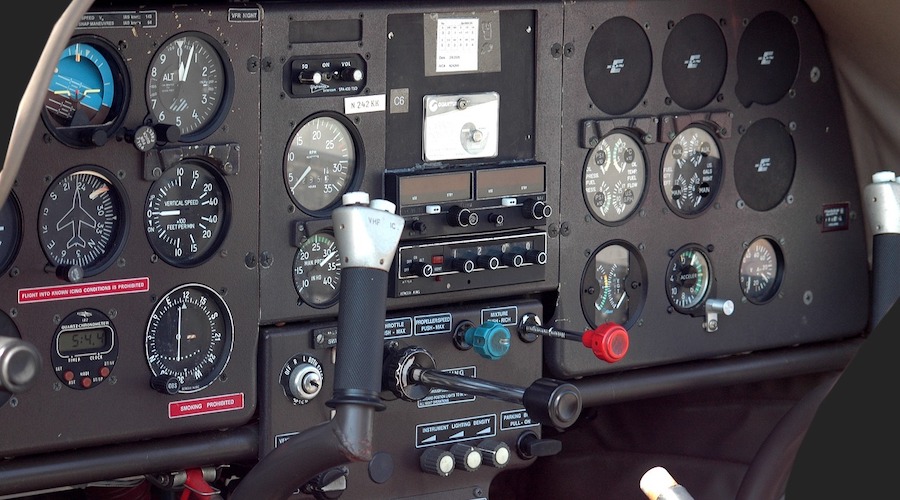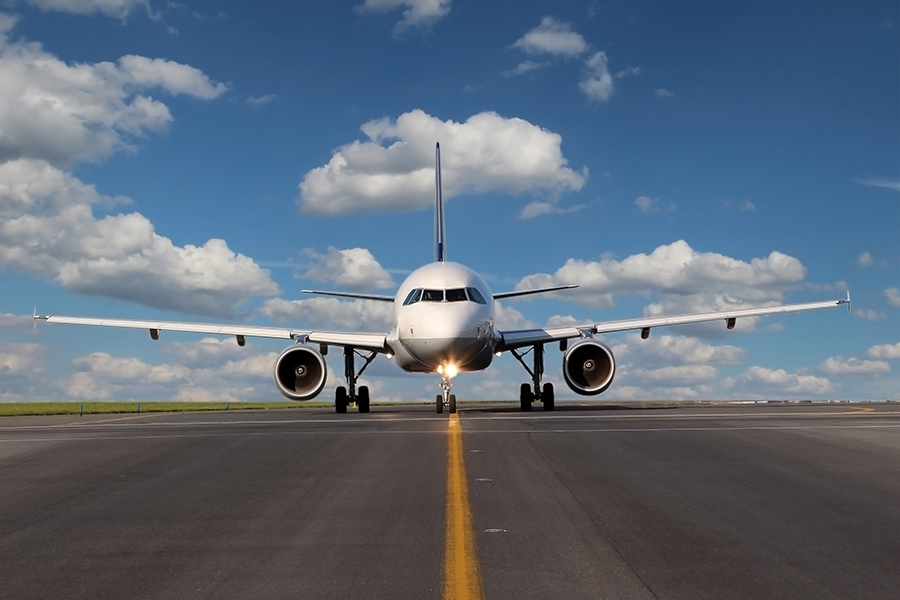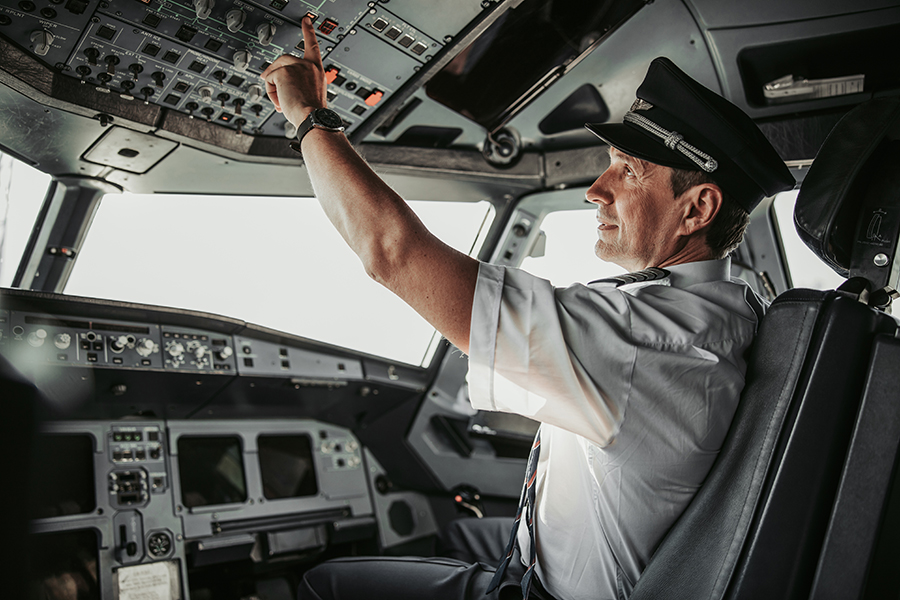-
What is Aircraft Insurance?
- What Aircraft Can Be Insured?
-
Types of Aircraft Insurance
- Renter’s Insurance
- Hangar Insurance
- International Liability
- In-Flight Insurance
- Ground Risk Hull (GRH) Insurance
- Public Liability Insurance
- Passenger Liability Insurance
- Combined Single Limit (CSL)
- Crew Coverage
-
How Much Does Aircraft Insurance Cost?
- The Amount of Coverage
- Increased Costs After Claims
-
Tips For Minimizing Aircraft Insurance Costs
- Avoid Claims
- Use a Hangar
- Flight Training
- Increase Your Hours
- Keep Your FAA Record Clean
- Join an Association
- A Note on Honesty
-
Conclusion
Finding the right aircraft insurance is a confusing, headache-inducing process. Aircraft insurance quotes are at best confusing and at worst misleading.
Insurance for a small aircraft will cost around $1,500 to $2,000 per year, but the amount of coverage and cost will vary significantly by the type of policy, aircraft, flight, and pilot.
To make the aircraft insurance process straightforward and keep you from being blindsided by expensive premiums, this article will explain the actual cost of aircraft insurance and provide you with the knowledge to shop with confidence.
What is Aircraft Insurance?
Unlike car insurance, there are no federal or state regulations that require aircraft insurance. This doesn’t mean that you shouldn’t obtain aircraft insurance, however.
Aircraft insurance is a general term used to refer to any insurance policy related to an aircraft, including property related to the use of the aircraft, such as hangers or airports. Aircraft insurance policies will cover some or all of the costs associated with an accident. This includes damage to the aircraft itself, injuries to passengers, and damage to property.
Furthermore, Fixed Based Operators (FBOs) and some airports require you to have aircraft insurance to use their facilities.
What Aircraft Can Be Insured?
While certain aircraft insurance companies will only insure certain types of aircraft, you should be able to find a company willing to insure almost any type of aircraft.
The following are examples of aircraft most commonly insured by aircraft insurance companies:
- Single and Multi-Engine Aircraft
- Helicopters
- Jet (Turbine) Aircraft
- Seaplanes
- Drones
- Homebuilt Aircraft
- Experimental Aircraft
Types of Aircraft Insurance
Renter’s Insurance
An aircraft owner’s insurance policy, such as those purchased by rental facilities or flight schools, will not cover damage you may cause when renting an aircraft from them, and you will therefore be liable for any costs associated with an accident.
Therefore, if you do not own and are instead renting the aircraft you intend to fly, you will need to buy non-owned aircraft insurance, also known as renter’s insurance.
For example:
- You are a student pilot receiving flying lessons in someone else’s airplane.
- You are a flight instructor providing instruction in a customer’s airplane.
- Your rent or borrow an airplane.
You can expect an annual premium of between $100 and $500, depending on the amount of coverage, your experience level, and the type of flying you do.
Hangar Insurance
Hangar insurance will cover any damage to a hangar or aircraft inside a hangar. If you rent a space in a hangar, you may be required to purchase hangar insurance in case your aircraft suffers any damage while in storage.
If you own a hangar, it would be wise to purchase hangar insurance to avoid paying for any damage your aircraft may incur while in storage.
International Liability
International liability is a component of aircraft insurance that covers damage incurred outside of the United States. With international liability added to your aircraft insurance, you will be able to fly internationally while still being covered by your insurance company in the United States.
Some countries do not allow an aircraft to enter their airspace without international liability. Most insurance companies offer a standard worldwide insurance package, but some countries may have more specific insurance requirements.
If you plan on flying into the following regions, contact your aircraft insurance company to ensure that your international liability covers the specific regional insurance requirements:
- The European Union
- Hong Kong
- Germany
- Mexico
- Italy
In-Flight Insurance
In-flight insurance is somewhat self-explanatory. In-flight insurance covers any damage incurred while the aircraft is in motion. In-flight insurance is typically the most expensive component, as most aircraft accidents happen during this time period.
Ground Risk Hull (GRH) Insurance
Ground Risk Hull (GRH) insurance is divided into two categories:
- Non-Motion
- Motion
Non-motion Ground Risk Hull insurance insures the aircraft against any damage incurred while the aircraft is on the ground and not moving. This includes, but is not limited to:
- Vandalism
- Hail
- Lightning
- Theft
Motion Ground Risk Hull insurance covers damage sustained while the aircraft is in motion but still on the ground, such as during taxi or takeoff.
Public Liability Insurance
Public liability insurance covers any damages to third parties or their property. This type of insurance is often required by law in many states.
Public liability insurance does not cover any damage done to the aircraft or the passengers.
Passenger Liability Insurance
Passenger liability insurance insures against injury or death of any passengers. Passenger liability insurance will financially compensate the victim in the event of injury or the family in the event of death.
Combined Single Limit (CSL)
You may see the term Combined Single Limit (CSL) in your insurance policy instead of public or passenger liability insurance. CSL insurance is a bundled aircraft insurance policy that includes public and passenger liability insurance.
Crew Coverage
Crew coverage is insurance that covers the crew members of an aircraft, including the pilots and cabin crew. Crew members generally receive this type of insurance from their company. It is intended to relieve crew members from any financial responsibility in the event of an accident.
How Much Does Aircraft Insurance Cost?
The Amount of Coverage
Insurance coverage refers to the percentage that the insurance company will cover in the event of a claim. For example, an insurance policy that does not include full coverage will only pay a portion of the expenses involved in an accident.
The cost of your aircraft insurance will largely depend on the amount of coverage you require. Obtaining the least expensive policy that only covers the bare minimum may not be the best choice for you.
To ensure that you get the best value for your money, calculate how much insurance you would need in the worst-case scenario and compare the price of the insurance premium. Remember to use a long-term viewpoint, as the price of the insurance premium will be a re-occurring (and more than likely increasing) payment.
Increased Costs After Claims
You may be wondering if the cost (known as a premium) of your insurance will increase after a claim. Ultimately, it entirely depends on the insurance company. If the insurance company views the cause of the claim as someone else’s fault, they may not increase the rate of your insurance premium.
It is more likely that the insurance company will increase the rate of your insurance premium after a claim, regardless of whose fault it was. The size of the increase will largely depend on the nature and scale of the accident.
Tips For Minimizing Aircraft Insurance Costs
Keeping your aircraft insurance costs low is extremely important. Small savings every year will compound into massive cost differences later on. There are many ways to keep your aircraft insurance costs to a minimum, although some are more difficult than others.
Avoid Claims
By far, the most efficient way to minimize your insurance costs is to avoid claims. Although this may seem obvious and practically defeats the purpose of paying for aircraft insurance, avoiding claims, especially small ones, will save you money in the long run.
Aircraft insurance companies are far more likely to increase your insurance premium if you submit a claim. If your aircraft is involved in a minor, relatively low-cost incident, you may want to pay for the damage out of pocket – especially if the damage was your fault.
For example:
- You incur damage worth $200. Your insurance premium is $2000 per annum. If you claim the $200 in damages, your insurance company may increase your premium to $2400 per annum. You may save money by paying for the damages yourself in this hypothetical case.
Keep in mind that this scenario varies significantly between aircraft insurance companies. Creating an open dialogue with a reputable insurance broker is paramount to saving money in the long run.
Use a Hangar
Storing your aircraft in a hanger, compared to tying it down outside, will reduce your insurance costs.
Storing your aircraft in a hangar protects it from the outside elements, such as weather, vandalism, and potential damage from movement on the apron. In addition, renting or buying space in a hanger will reduce maintenance costs.
Flight Training
The more training you have received, the lower the insurance companies interpret your risk of being involved in an accident. Consequently, insurance companies will offer a lower premium the more advanced your qualifications are.
While it may not be realistic to invest significant time and money into obtaining a new license, such as a Commercial Pilot License, it may be worth investing time and money in additional training. Demonstrating a history of regular flight training over and above what is legally required will go a long way in showing an aircraft insurance company that you are at a lower risk.
Some insurance companies require you to undergo specific flight training to be eligible for an aircraft insurance premium. Make sure to enquire about any additional flight training requirements or any flight training programs that might reduce your insurance premium.
Increase Your Hours
Similar to the amount of training you have received, the number of flight hours you have directly influences your risk factor to the insurance companies. As a result, you can expect a lower premium the more flight hours you have. Statistically, if you have over 5,000 hours, your risk of being involved in an accident reduces by 50%.
Furthermore, the more hours you have with the model and type of aircraft you intend to insure, the lower your insurance premiums will be. For example, if the majority of your hours have been logged in a Cessna 172, your insurance premium will be lower if the aircraft you are trying to insure is a Cessna 172, compared to an aircraft such as a multi-engine Piper.
Keep Your FAA Record Clean
Aircraft insurance companies will review the following two FAA Records when you apply for insurance:
- Your medical record
- Your flying record
If your FAA medical certificate has ever been revoked or had to go under review, this will play a factor in calculating your insurance costs. Insurance companies view a spotty medical history as a risk factor. Unfortunately, there is not much you can do about this other than keep yourself healthy.
Something you do you have more control over, however, is your flying record. If you have any accidents or incidents on your FAA Record, or your license was ever revoked or suspended, aircraft insurance companies may be led to believe that you are a higher-risk pilot.
Keep your flight record as clean as possible, and be honest about any accidents or incidents you may have been involved in. Accidents or incidents that were not your fault need to be explained to the insurance company.
Join an Association
Joining an association or flight club may make you eligible for discounts from certain aircraft insurance companies. These organizations charge a membership fee for access to certain benefits, and there are many to choose from. Do some research and find out if joining one of these associations will be worth your while.
A Note on Honesty
You may be wondering if you could “misremember” details about your FAA record, experience level, or details about your aircraft to reduce your insurance premium. While you may feel that some of the parameters included in your insurance premium calculation may be unfair, failing to disclose information, or providing false information, constitutes insurance fraud – A severe crime.
Honesty during the application or renewal process is paramount from a legal perspective, no matter the cost involved.
Conclusion
Aircraft insurance is highly variable and must be tailored to each individual’s specific needs. The key to receiving the Best premium possible is to be prepared before shopping. Ensure you know your insurance coverage needs and what aspects specific to you will influence your premium.
By understanding how aircraft insurance works, you will be able to identify which aviation insurance company best suits your needs. If you’re careful (and a little lucky), you’ll never have to use them!




